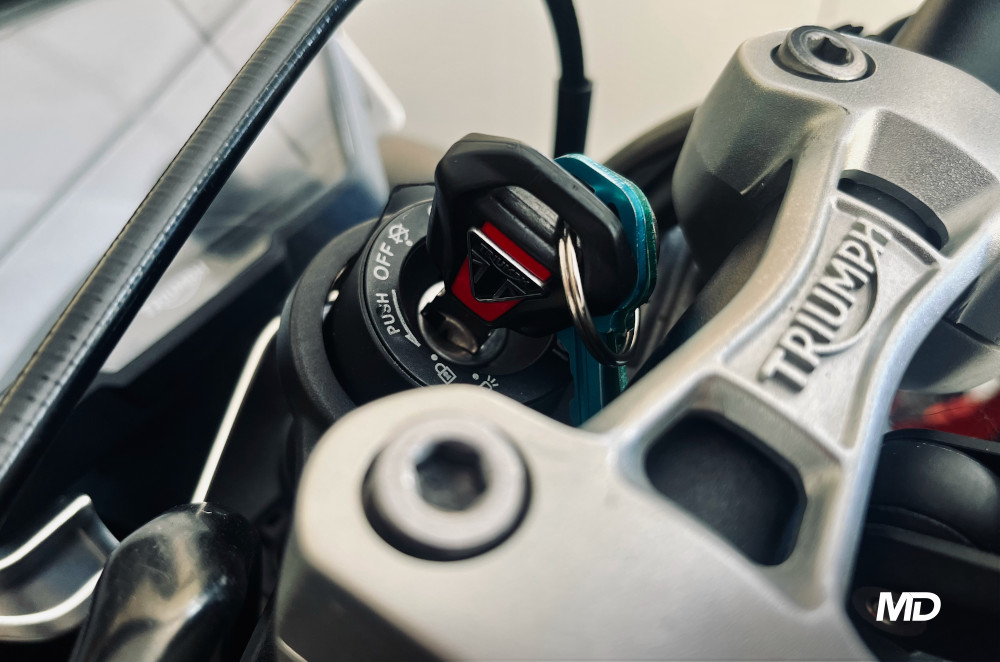Why do motorcycles have a separate ignition and starter button?
Unlike cars, most motorcycles have a push start button separate from the ignition.

If you’re new to motorcycles, then chances are you struggled to start the engine the very first time you rode a motorbike. A lot of motorcyclists get into the two-wheeled lifestyle after already knowing how to drive a car, and as such, it’s understandable that you’d think that starting up a motorcycle is just the same as starting up a car.
In most cars, at least before the advent of keyless ignitions, you had to insert the key in the ignition barrel, then turn it to crank the engine, thereby starting it up. In motorcycles on the other hand, you have to stick the key in the ignition, turn it to the on position, and then press a separate button usually found on the right side of the handlebar. Oftentimes, this starter button is also integrated with a kill switch. Sometimes you’d even have to pull the clutch lever in, and only then would the engine start. Now, have you ever wondered why this is the case?

Well, the answer is simple, really. It’s mostly for safety. You see, motorcycles are inherently riskier to drive than cars. Not only are you exposed to the elements, but you’re also rolling on two fewer wheels than your four-wheeled neighbors. On top of that, most mid to high-displacement motorcycles pack quite a lot of power—power that could very easily overwhelm and frighten a novice rider. That being said, motorcycles start up the way they do in order to provide a redundancy of safety features, thereby preventing you from starting the engine unintentionally.

Apart from the separation of the ignition and starter button, most motorcycles have additional redundant safety features that eliminate the possibility of an unintentional startup. Some bikes, such as those from Triumph, require you to pull in the clutch lever every time you start the engine—yes, even if you put it in neutral. Furthermore, nearly all modern day motorcycles are equipped with a side stand switch that automatically cuts the engine if the side stand is put down while the bike is in gear. The same system also prevents you from starting the engine in gear with the side stand down.
By incorporating all these features, manufacturers get to ensure that a motorcycle rider’s actions are as deliberate as possible when it comes to starting the engine. By doing this, rider safety is significantly improved, and the risk of injury and accidents resulting from inexperienced riders starting up the powerful engines of big bikes can be eliminated almost completely.
Related Articles
-
Big bike versus small bike: which one is better for your lifestyle? / Featured Article
Here are a few tips to decide if you should get a big bike or small bike depending on your lifestyle.
-
Axial versus radial calipers - brake technology explained / Featured Article
Today, let’s talk about the differences between radially and axially mounted calipers, and determine the situations which are ideal for either.
-
Is your motorcycle out of warranty? Be sure to check these items ASAP / Featured Article
If your motorcycle is out of warranty, it’s now your duty to make sure you stay on top of its maintenance no matter what, or run the risk of facing a hefty repair bill.
-
How does adaptive cruise control work and what is it for? / Featured Article
Adaptive cruise control is a tech feature that’s gradually making its way to more and more motorcycles. Let’s take a look at how it works, what it’s for, and what bikes have this cutting-edg...
-
5 reasons why you should never ride your motorcycle without gloves on / Featured Article
If you’re thinking of riding your bike without gloves on, think again. Here are a few reasons why wearing gloves is an absolute must.
Latest Features
-
Big bike versus small bike: which one is better for your lifestyle? / Featured Article
Here are a few tips to decide if you should get a big bike or small bike depending on your lifestyle.
-
Axial versus radial calipers - brake technology explained / Featured Article
Today, let’s talk about the differences between radially and axially mounted calipers, and determine the situations which are ideal for either.
-
3 things that make the Honda ADV 160 the perfect small-displacement all-rounder / Featured Article
Here are three reasons why the new Honda ADV 160 is one of the best small-displacement scooters in the market today.







